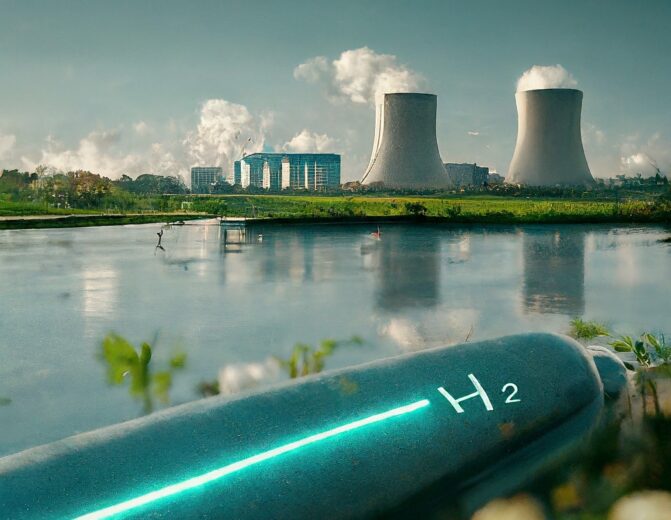By: NYAREA Opinion Column | February 27, 2024
Hydrogen has emerged as a promising alternative energy source, playing a crucial role in the transition towards a more sustainable future. As the demand for clean energy grows, various types of hydrogen production methods have gained attention. One interesting aspect is the color-coded classification of hydrogen based on the electricity source used in the electrolysis process. In this article, we will explore the different types of hydrogen and assess the potential value of hydrogen power plants in the New York City Area.
Types of Hydrogen:
1. Grey Hydrogen:
– Grey hydrogen is produced through a process known as steam methane reforming (SMR), which involves extracting hydrogen from natural gas.
– It is termed “grey” because the carbon emissions generated during the production process are not captured or mitigated.
– Grey hydrogen is the most common type but is not considered environmentally friendly due to its carbon footprint.
2. Blue Hydrogen:
– Blue hydrogen is also derived from natural gas through steam methane reforming.
– However, in this case, carbon capture and storage (CCS) technologies are employed to capture and store the carbon emissions, making it a more environmentally friendly option than grey hydrogen.
3. Green Hydrogen:
– Green hydrogen is produced through water electrolysis using renewable energy sources like wind, solar, or hydropower.
– The electrolysis process involves splitting water into hydrogen and oxygen, with no carbon emissions.
– Green hydrogen is considered the cleanest form and aligns with the goals of achieving a carbon-neutral energy sector.
4. Turquoise Hydrogen:
– Turquoise hydrogen is produced through a process called pyrolysis, utilizing methane with solid oxide electrolysis.
– It is considered a novel approach with the potential for efficient hydrogen production.
5. Pink Hydrogen:
– Pink hydrogen is another variant produced through water electrolysis, but it utilizes nuclear power as its energy source.
– While this method doesn’t produce direct carbon emissions, concerns about nuclear energy’s environmental impact and safety persist.
Hydrogen Power Plants in the New York City Area:
Now that we have explored the types of hydrogen, let’s assess the value of hydrogen power plants in the New York City Area.
1. Reducing Carbon Footprint:
– New York City has ambitious climate goals, aiming to reduce carbon emissions significantly.
– Hydrogen power plants, especially those producing green and blue hydrogen, can contribute to the city’s efforts to decarbonize its energy sector [1].
2. Energy Storage and Grid Stability:
– Hydrogen can serve as an energy storage solution, addressing the intermittent nature of renewable energy sources.
– Power plants with hydrogen storage capabilities can enhance grid stability and provide a reliable source of energy during peak demand periods [2].
3. Fuel for Transportation:
– Hydrogen can be used as a clean fuel for transportation, including buses, trucks, and even cars.
– Establishing hydrogen fueling stations in the city can promote the adoption of hydrogen-powered vehicles, reducing reliance on fossil fuels [3].
4. Job Creation and Economic Growth:
– The development and operation of hydrogen power plants will create job opportunities and stimulate economic growth in the New York City Area [4].
– Investments in clean energy infrastructure can contribute to a more resilient and sustainable local economy.
Reviving Indian Point Nuclear Power Plant for Pink Hydrogen:

https://www.clearwater.org/category/action/indian-point/indian-point-page/
The decommissioned Indian Point Nuclear Power Plant presents a unique opportunity for the production of pink hydrogen.
1. Nuclear Power for Hydrogen Production:
– The Indian Point site, with its existing nuclear infrastructure, could be repurposed to generate electricity for pink hydrogen production.
– The use of nuclear power eliminates direct carbon emissions during the electrolysis process, making it a clean energy source for hydrogen production [5].
2. Leveraging Existing Infrastructure:
– The Indian Point site already possesses the necessary infrastructure for electricity generation, simplifying the process of adapting it for hydrogen production.
– Utilizing the existing grid connections and facilities can significantly reduce the overall investment required [6].
3. Addressing Safety and Environmental Concerns:
– Safety and environmental concerns associated with nuclear power need to be carefully addressed. Implementing state-of-the-art safety measures and ensuring transparent communication with the local community are essential [7].
The color-coded spectrum of hydrogen reflects the diverse methods of production, each with its environmental implications. In the context of New York City, embracing hydrogen power plants, particularly those focused on green, blue, and pink hydrogen production, can play a pivotal role in achieving clean energy goals. Reviving the Indian Point Nuclear Power Plant for pink hydrogen adds a new dimension to the city’s sustainable energy portfolio. The inclusion of nuclear power raises questions about safety and public perception, emphasizing the need for careful consideration and community engagement, but offers the promise of sufficient, clean energy that tackles New York’s underlying renewable problem of creating baseload power. Not only does it revitalize jobs in the region, but it also leverages existing infrastructure to reduce the traditionally significant capital expenditures of a new hydrogen plant. The shift towards hydrogen offers not only environmental benefits but also economic opportunities, making it a viable and valuable component of the city’s sustainable energy future.
**References:**
1. New York City Climate Goals
2. Hydrogen Storage for Grid Stability
4. Job Creation in Clean Energy
5. Nuclear Power for Hydrogen Production



 Back
Back




